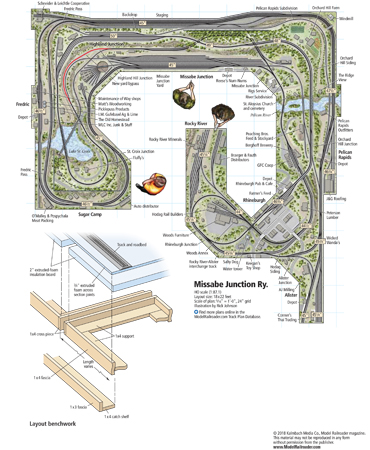
Name: Missabe Junction Ry. (2018) Layout owner: Steve Miazga Scale: N (160:1) Size: 18 x 22 feet Prototypes: Soo Line; Duluth, Missabe & Iron Range; Wisconsin Central/Fox River Valley; Canadian National; and Missabe Junction Ry. Locale: north-central Wisconsin Era: 1960 to 1990 Style: island walk-in Mainline run: 150 feet Minimum radius: 15″ Minimum turnout: no. […]
Read More…
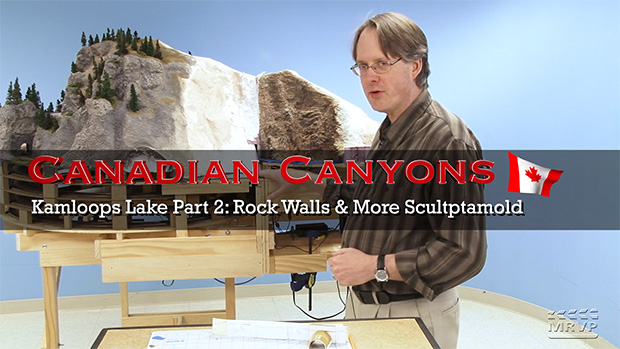
Having trouble viewing this video? Please visit our Video FAQ page David has the plexiglas water installed in the Kamloops Lake scene of our Canadian Canyons N scale project layout. Now Eric White can begin installing the stone wall along the waterfront. Follow along as he shows how to prep, paint, and then place […]
Read More…

Having trouble viewing this video? Please visit our Video FAQ page David has the plexiglas water installed in the Kamloops Lake scene of our Canadian Canyons N scale project layout. Now Eric White can begin installing the stone wall along the waterfront. Follow along as he shows how to prep, paint, and then place […]
Read More…

Having trouble viewing this video? Please visit our Video FAQ page David has the plexiglas water installed in the Kamloops Lake scene of our Canadian Canyons N scale project layout. Now Eric White can begin installing the stone wall along the waterfront. Follow along as he shows how to prep, paint, and then place […]
Read More…
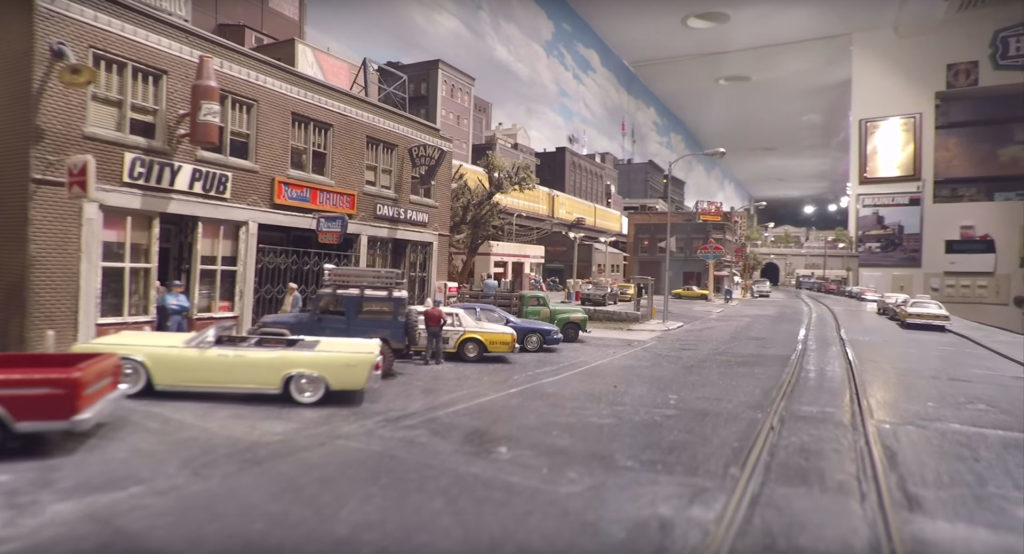
The HO scale City Edge layout features custom urethane structures created, painted, and weathered by Vic Smith. The streets are poured using a road paving plaster from Woodland Scenics. […]
Read More…
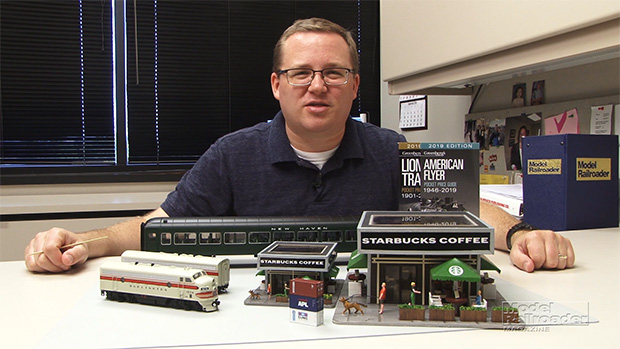
Having trouble viewing this video? Please visit our Video FAQ page New diesel locomotives in N and O scale highlight the new model railroading products featured in this month’s episode of Cody’s Office. Model Railroader associate editor Cody Grivno will also give you tips for modeling a “patched out” diesel locomotive. This month’s viewer […]
Read More…

Having trouble viewing this video? Please visit our Video FAQ page New diesel locomotives in N and O scale highlight the new model railroading products featured in this month’s episode of Cody’s Office. Model Railroader associate editor Cody Grivno will also give you tips for modeling a “patched out” diesel locomotive. This month’s viewer […]
Read More…
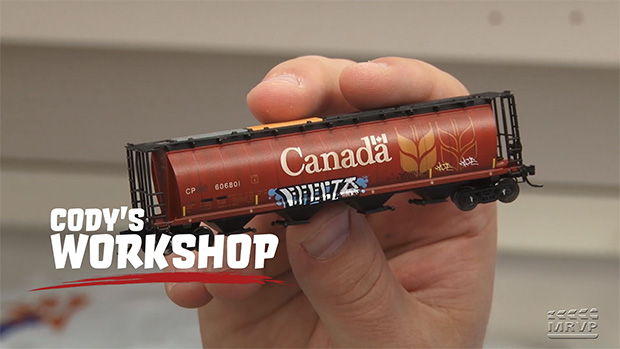
Having trouble viewing this video? Please visit our Video FAQ page Don’t have an airbrush? Maybe you don’t need one? Host Cody Grivno shares his techniques for making a cylindrical hopper look good n’ grimy – all without using an airbrush! Follow along as he shares how to work with weathering powders and brushed-on paint […]
Read More…

Having trouble viewing this video? Please visit our Video FAQ page Don’t have an airbrush? Maybe you don’t need one? Host Cody Grivno shares his techniques for making a cylindrical hopper look good n’ grimy – all without using an airbrush! Follow along as he shares how to work with weathering powders and brushed-on paint […]
Read More…
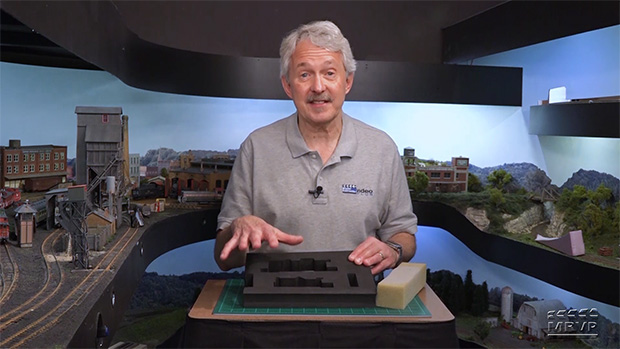
Having trouble viewing this video? Please visit our Video FAQ page This time on Off The Rails, host Gerry Leone has fun with foam! Not the type of foam insulation board typically used in model railroad scenery. Instead, Gerry keeps his focus on open-cell and closed-cell foam commonly used as model railroad product packaging. […]
Read More…

Having trouble viewing this video? Please visit our Video FAQ page This time on Off The Rails, host Gerry Leone has fun with foam! Not the type of foam insulation board typically used in model railroad scenery. Instead, Gerry keeps his focus on open-cell and closed-cell foam commonly used as model railroad product packaging. […]
Read More…
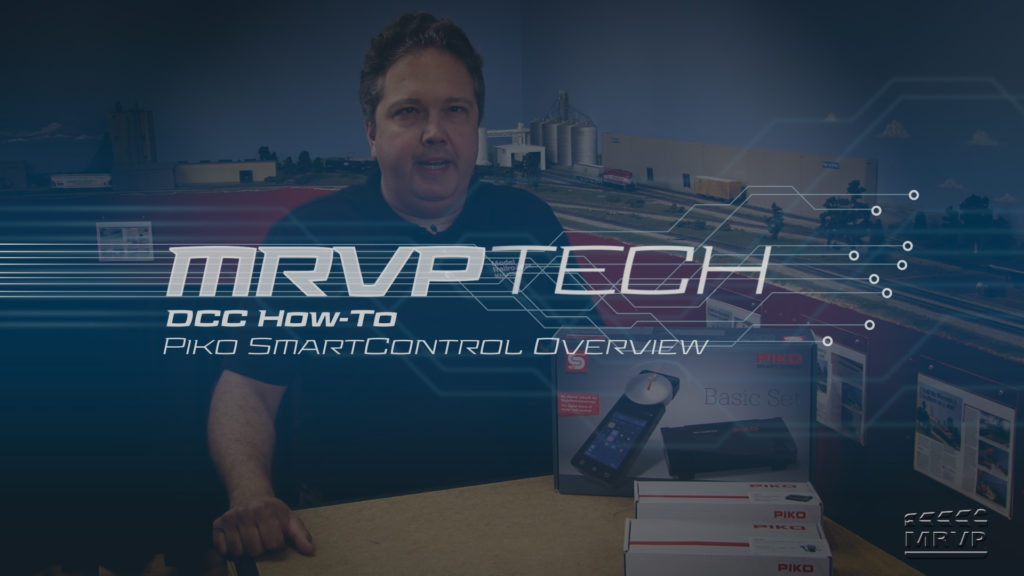
Having trouble viewing this video? Please visit our Video FAQ page Dana Kawala, senior editor for Model Railroader magazine, gets his hands on a PIKO SmartControl Basic Set. Watch this video to see how Dana uses the Pro SmartController to program and operate DCC-equipped locomotives on the WSOR section of the MR&T HO scale layout. […]
Read More…







